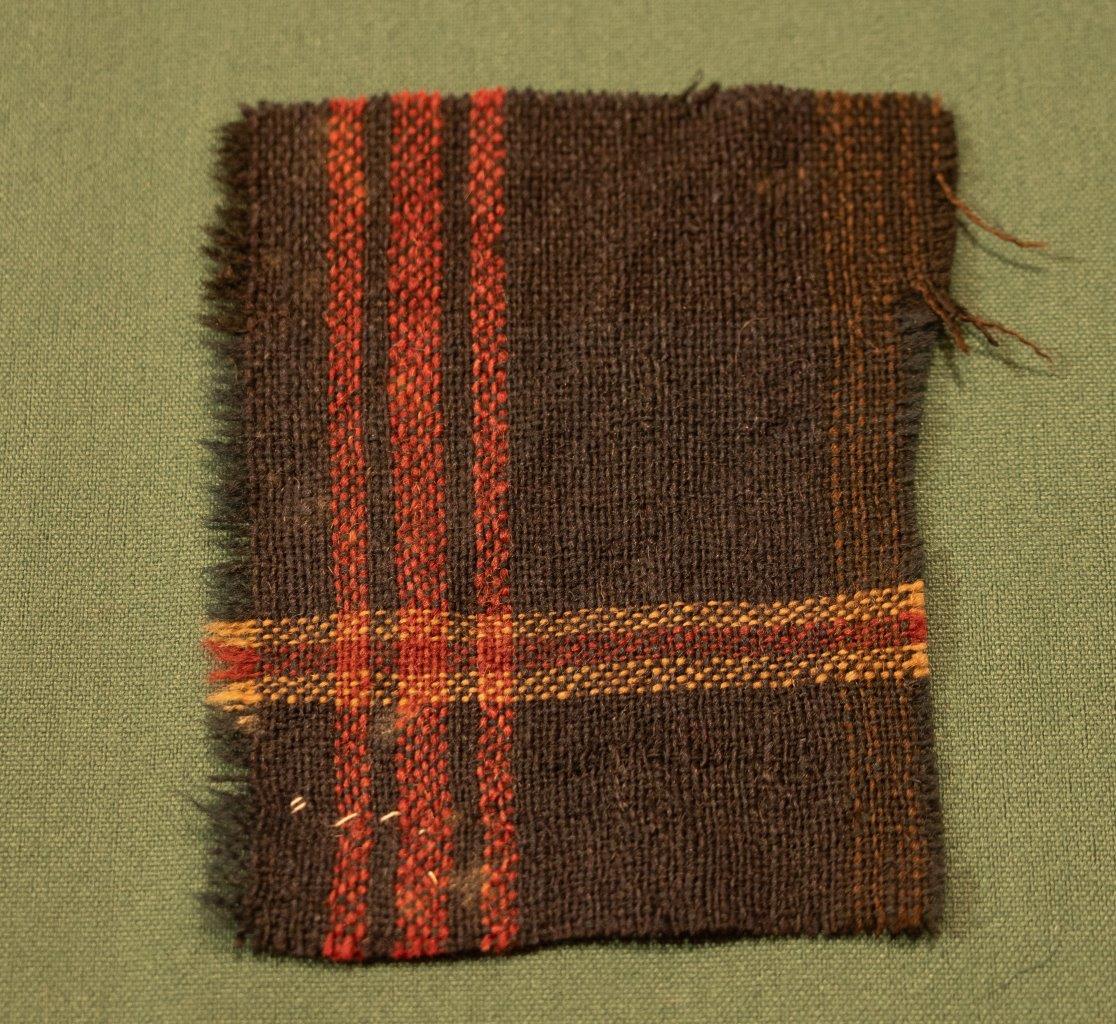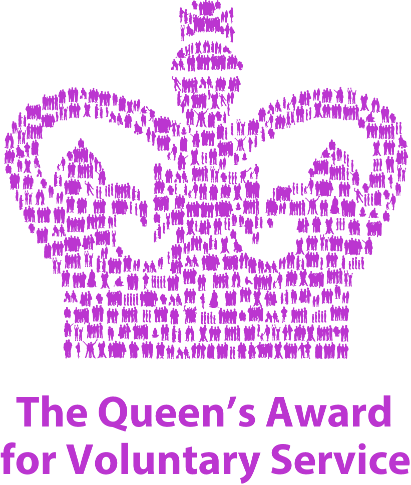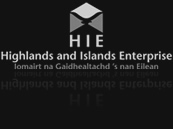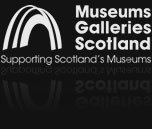Blog
The 31st December 2020 marks the 300th anniversary of the birth of Prince Charles Edward Stuart. To commemorate this special occasion the West Highland Museum has organised a series of articles written by scholars, academics, authors, and Jacobite enthusiasts. In this fifth in the series historian Professor Hugh Cheape focuses on an important tartan in our collection.
Prince Charlie’s Kilt – the better to make him pass for one of the country
A fragment of tartan is preserved in the collections of the West Highland Museum and displayed appropriately in the ‘Jacobite Room’, the Jacobite collections of the Museum being of national importance (WHM Acc No 732). This piece of tartan is only 4 inches by 3 inches but is labelled as ‘fragment of kilt worn by Prince Charlie’ – showing that even a ‘scrap’ can be the stuff of history. The piece of tartan came to the Museum in 1924 and was known to historian and tartan expert, Peter MacDonald, who recognised its importance. In the mid-1980s another tartan fragment was being researched by the late Tom Massey Lynch. This example was preserved in a collection of Jacobite and Royal Stuart relics at the English Jesuit School at Stonyhurst in Lancashire. This latter piece is larger, at just over 4 inches square, and is mounted on card and framed with a manuscript note of its history:
This piece of cloth is part of a kilt left by Prince Charlie in the House of Campbell, Island of Glass, 30th April 1746.

This ‘history’ is so brief as to be tantalising, considering its claim to be part of a kilt worn by this much-celebrated figure in Scottish History. Bits of his kilt and locks of his hair are claimed all round the country and the Prince’s extravagance was evident in that extraordinary display of Jacobite relics, Exhibition of the Royal House of Stuart, in London in 1889!
According to the details published in Itinerary of Prince Charles Edward Stuart (Scottish History Society 1897), on 30 April 1746 the Prince was in Eilean Scalpaidh na Hearadh or the Island of Scalpay. Another name for Scalpay among Gaelic speakers in the past was Eilean Glas or ‘Green Island’, a name happily preserved by the Northern Lighthouse Board for its key site in Scalpay, being one of the first four lighthouses to be built in Scotland, the Eilean Glas Lighthouse. This had become anglicised in the old labels into the fairy-tale like ‘Island of Glass’.
A third and similar tartan fragment with approximately the same slightly cryptic provenance emerged from the south of England in the late 1980s and was presented to the National Museums Scotland (NMS H.1993.86). The fibres and colour pigments of all three pieces were analysed in the Conservation Laboratories and were seen to match. They were considered to have come from the coat of a pre-improvement ‘native’ sheep breed and dyestuffs that were current and traded in the early 18th century. Other analytical research on other Prince Charlie kilt fragments preserved round the country suggested that attributions to Bonnie Prince Charlie had been more romantic than factual, and that the Eilean Glas fragments had a seemingly unique claim to be ‘genuine’ and the only material evidence therefore for a ‘kilt’ and a tartan worn by the Stewart kings and queens. Laboratory and tartan textile research enabled a reconstruction to be made of the colours and ‘sett’ of the original tartan.
The Itinerary offers a simple key to discovering how Prince Charlie mislaid his kilt in Scalpay. In the immediate aftermath of the Battle of Culloden, the Prince rode with a few followers into the west-coast hills where he could get shelter from the enemy. He arrived on foot in Arisaig on 20 April and was given shelter by Angus MacDonald of Borrodale in whose house he had been received on first stepping onto the Scottish mainland the year before, and some days before the ‘Raising of the Standard’ at Glenfinnan. The MacDonalds of Borrodale were Tacksmen of the Clanranald chief and supported the Jacobite cause. The events of these days were described by Alexander MacDonald in an interview with Bishop Robert Forbes who amassed such oral testimonies on the ’45 in his precious manuscript, ‘The Lyon in Mourning’. Alasdair Mac Mhaighstir Alasadair of Dalilea was one of the greatest of all Gaelic poets, Captain in the Jacobite army and Gaelic tutor to Prince Charlie:
Early upon the 20th [April], Hid Royal Highness got up and went straight to Arisaig to a town called Glenbiastill, where the Prince got a sute of new Highland cloaths from Angus MacDonald of Borrodale’s spouse, the better to disguise him and to make him pass for one of the country.
Angus MacDonald, while too old himself to march with the Jacobite army, played his part in helping the Prince. Not least, three of his sons were officers in the Clanranald Regiment, and at the moment of receiving the Royal fugitive into their home, his wife must have learnt of the death of her son, John, on the Culloden battlefield. The gift of a ‘sute of Highland cloaths’, probably in the form of a plaid and doublet, was the special contribution of Angus of Borrodale’s wife to the extraordinary story of the ’45. None of the standard sources name her but a copy of her marriage contract of 1712 identifies her as Catriona Graham or MacGregor of Corriearklet on Loch Katrine-side.
On the night of 26 April, the Prince and his party sailed from Borrodale for the Outer Hebrides. This was against local advice in the face of worsening weather! Caught in a storm in the Minch, their eight-oared boat barely reached the islands, landing them on Rossinish in Benbecula where they went into hiding. On the quest for a larger boat, they set off for Stornoway on the evening of 29 April and landed before dawn the next day on a steep rocky shore in Scalpay. Here the Prince was received by the Tacksman of Scalpay, Donald Campbell – not a Jacobite but one for whom the traditional and unwritten laws of Gaelic hospitality transcended political loyalties. He gave the Prince a change of clothes, his tartan plaid from ‘Lady Borrodale’ having been spoilt by seawater. This was then left behind in Scalpay when the Prince and his companions departed for Stornoway on 4 May.
Although we can’t be certain, the tartan might well have been fondly preserved as curtain or chair-covering in Scalpay before being cut up and distributed as Jacobite and Prince Charlie ‘relics’ in the early 19th century. Research to authenticate such relics can bring to the surface neglected narratives, hidden voices and intriguing detail which throw more light on what was happening ‘on the ground’ and what motives might have inspired folk in 1745.
.jpg) Reconstruction of the tartan of Prince Charlie's kilt by Peter MacDonald
Reconstruction of the tartan of Prince Charlie's kilt by Peter MacDonald
Hugh Cheape
Sabhal Mòr Ostaig
An t-Samhain 2020











